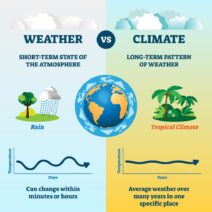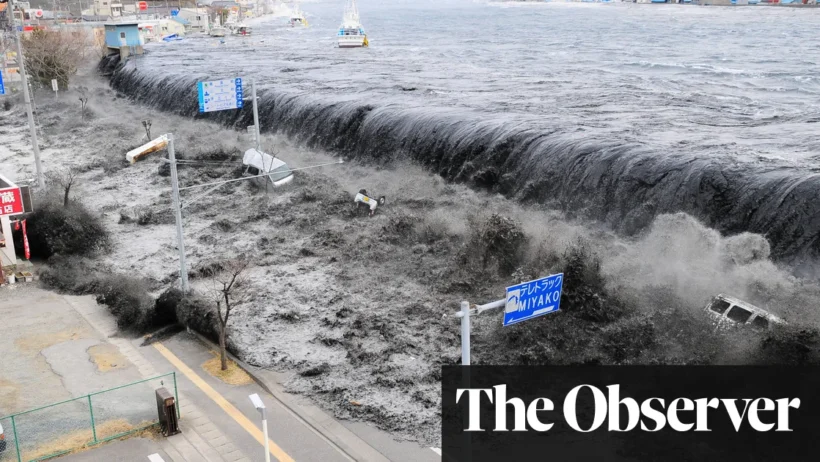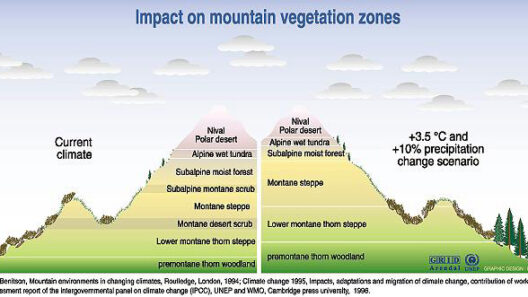As our planet grapples with the pernicious effects of climate change, the question arises: can alterations in our climate system actually provoke geological upheavals such as earthquakes? It is crucial to disentangle the myths from the scientifically grounded realities surrounding this pressing concern.
To embark on this inquiry, we must first appreciate the intricate nature of climate change itself. The term encompasses a variety of phenomena, primarily driven by greenhouse gas emissions from anthropogenic activities. These emissions not only cause a warming effect, but they also disrupt local and global weather patterns, marking a departure from historical climate norms.
While it is generally accepted that climate change predominantly influences atmospheric and hydrological systems, some researchers posit that it may also have repercussions on the Earth’s geological processes. The fundamental principle lies in understanding how the redistribution of mass can exert pressure on tectonic plates, which float atop the semi-fluid asthenosphere. When large masses of ice, such as those found in Greenland or Antarctica, melt due to rising temperatures, the resulting reduction in gravitational pull can technically release stress along fault lines, potentially triggering seismic activity.
In examining the mechanisms at play, it becomes pertinent to consider the concept of isostatic rebound. As glaciers retreat, the Earth’s crust can experience a rebounding effect, altering stress distributions within the lithosphere. Such geological shifts may, under certain conditions, incite minor earthquakes. The 2011 earthquake in Greenland, measuring a modest 4.2 in magnitude, was partially attributed to this very phenomenon as glacial melting was shown to correlate with seismic events. Yet it is paramount to stress that not all seismic activity is directly instigated by climate variabilities.
Conversely, volcanic activity presents a different yet intriguing context in the climate-change discourse. The connection between melting polar ice and volcanic eruptions is nuanced. Some studies suggest that decreased ice load can alleviate pressure on magma chambers, which might lower the threshold for eruptions. The restless nature of the Earth’s crust underlines the complexity of these interactions—one that may not always yield noticeable results, yet remains a valid area of exploration.
However, while intriguing, these correlations often lead to hasty conclusions about causation. Earthquakes are primarily the result of tectonic movements, driven by the Earth’s internal heat and geological processes that operate on timescales far exceeding human lifespans. The estimated energy released in the most powerful earthquakes dwarfs the geophysical changes wrought by climate-induced phenomena. Thus, attributing significant seismic events like the 2010 Haitian earthquake or the 2004 Indian Ocean earthquake to climate change could engender misconceptions and detract from understanding the multifactorial nature of such disasters.
More tenuous arguments attempt to link climate change to increases in seismic activity through anthropogenic factors, such as the injection of wastewater into the ground, a practice related to hydraulic fracturing and oil extraction. These activities have been definitively linked to increased seismic activity, yet this connection stems more from human-induced geological alterations rather than direct climate change repercussions.
A critical facet often overlooked is the feedback loop that exists between geological and climatic systems. Natural disasters, notably earthquakes and volcanic eruptions, can exert significant influences on regional and global climates. For instance, volcanic eruptions can inject large quantities of ash and sulfur dioxide into the atmosphere, potentially cooling Earth’s surface temporarily. Conversely, shifts in climate can influence the hydrology of regions, thereby changing patterns of erosion, sediment deposition, and even water table levels, which can all reshape landscapes and subsequently affect geological stability over time.
This complexity highlights the necessity for a rigorous scientific approach in analyzing the causal relationships between climate events and geological activity. Through a competent application of geophysics, understanding of isotopes, and data modeling, researchers continue to explore the intersectionality of these disciplines, seeking to unravel the threads that bind them together.
As society strives for sustainability in light of climate advancements, the overwhelming preoccupation must remain focused on mitigating the root causes of climate change rather than sensationalizing the potential seismic repercussions. This discourse must also encompass greater awareness and preparedness for natural disasters, particularly in regions susceptible to seismic risks, irrespective of their connection to shifting climate patterns.
In summary, the assertion that climate change directly triggers significant earthquakes is oversimplified and misleading. However, there exists a legitimate discourse concerning the potential for induced seismicity in the context of glacial melt-off and volcanic dynamics. The interrelationship between geological and climatic systems requires salient exploration, informed by scientific rigor. Debunking myths surrounding climate change is essential, yet it should also pave the way for a better understanding of our planet’s systems and prepare us for the multifaceted challenges that lie ahead.







